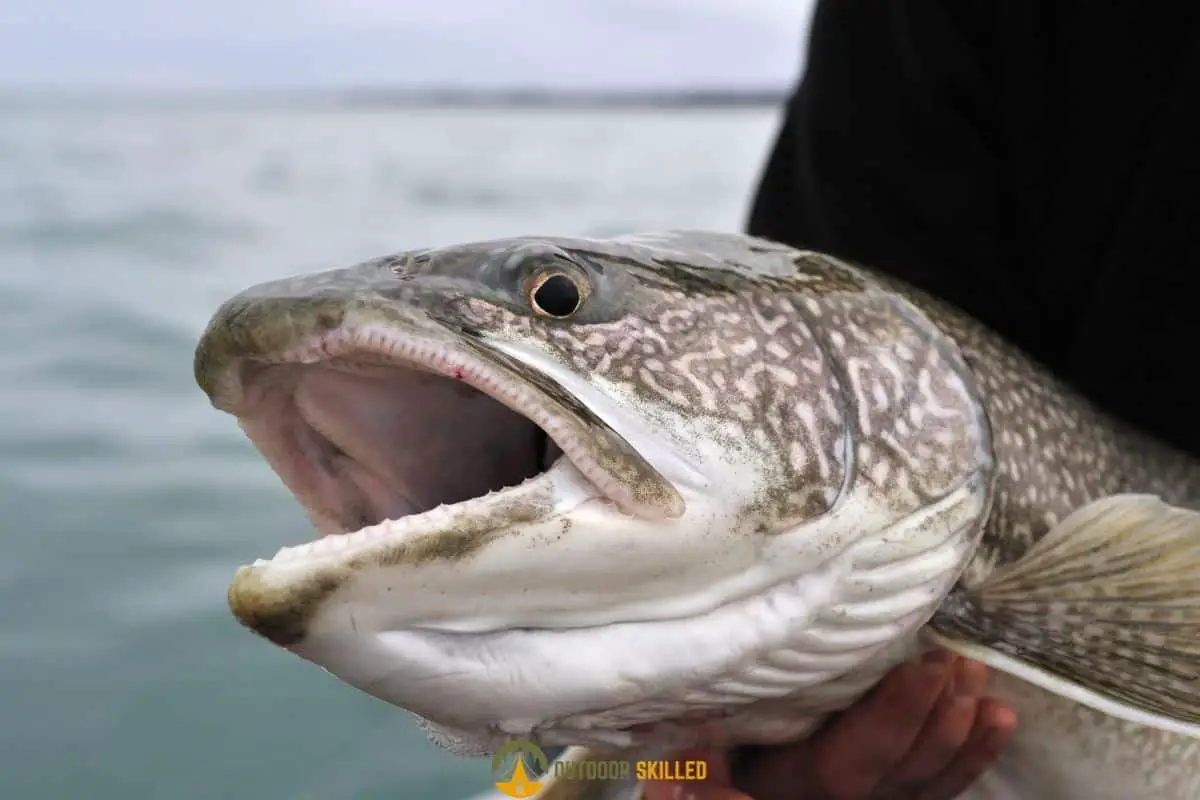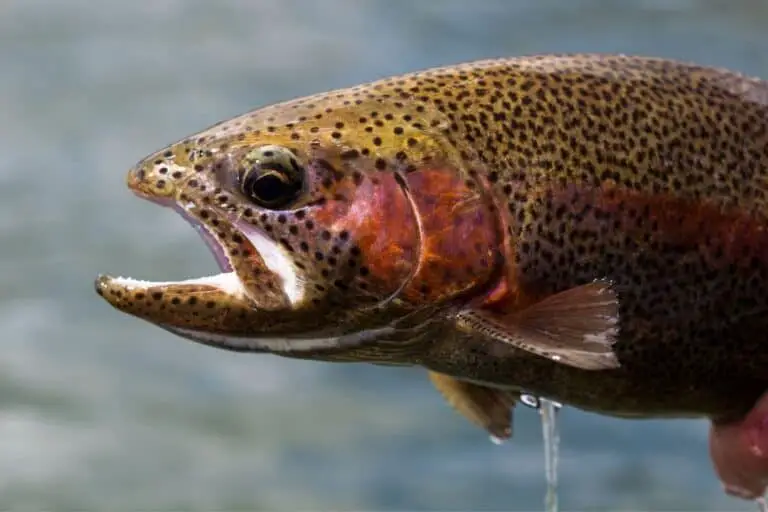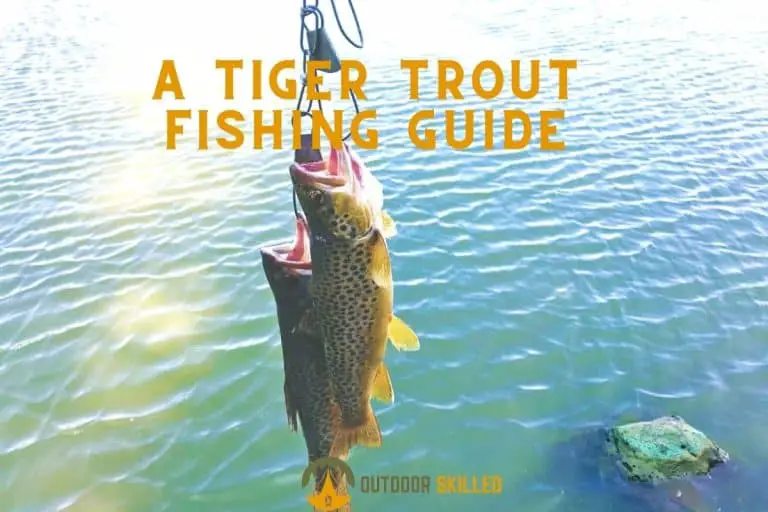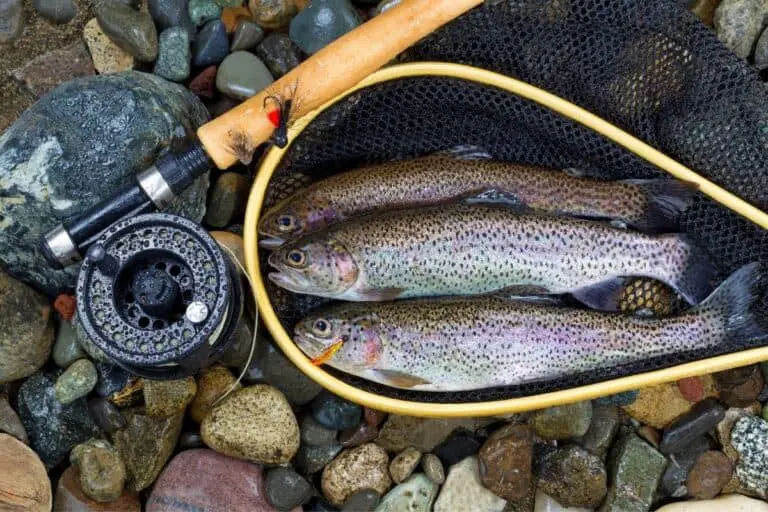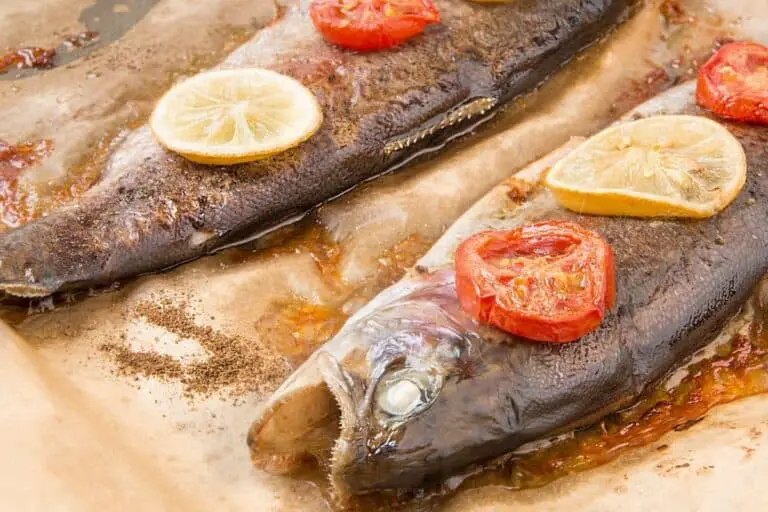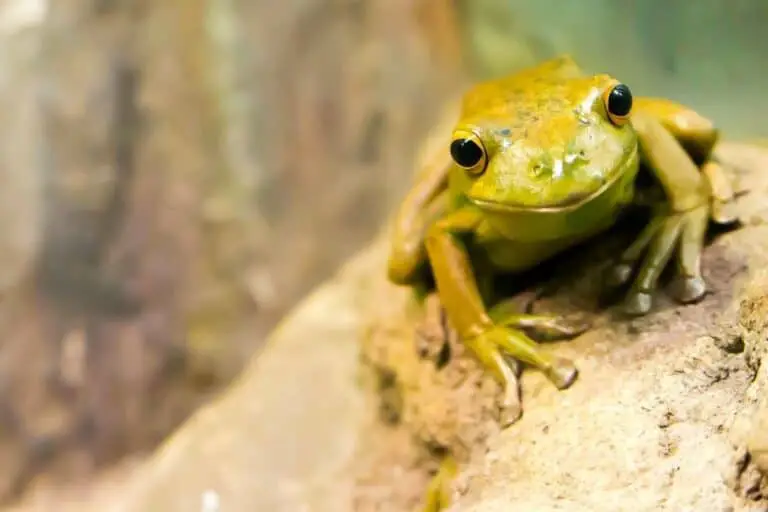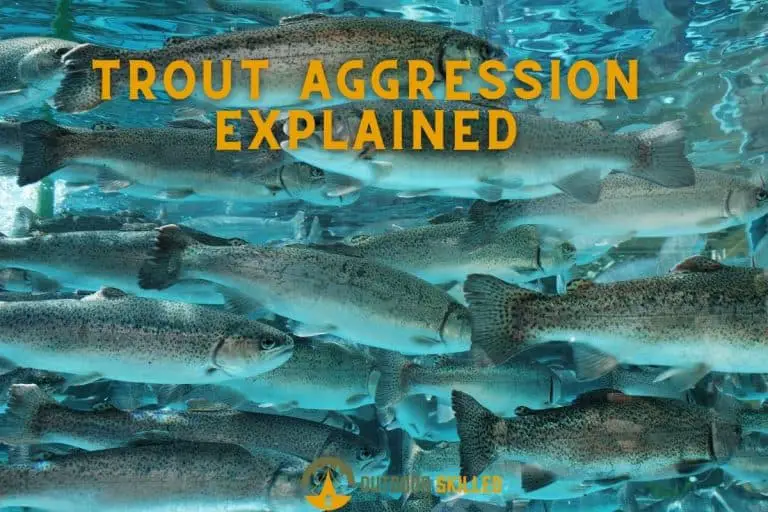How To Fish For Lake Trout In The Summer | A Complete Guide
One of the most enticing features of lake trout fishing is that it can be done all year. However, anglers will need to adapt their tactics as the seasons change, but it’s not that difficult with a little practice. Summer trouting out of all seasons has its special advantages, it’s when trout are actively feeding and concentrating on specific areas.
How to fish for lake trout in the summer? To fish for lake trout in the summer you need to use a 7-to-7½-foot-long medium- to medium-heavy-action spinning rod, and a reel spooled with 10-pound-test monofilament or fluorocarbon. Cast your lures around distinctive bottom structures such as reefs and rocks with bright-colored lures.
Keep reading to know more about fishing for lake trout in the summer and how you can get the best of it. If you feel you’re already ready to go catch some trout, you can now upgrade your gear with my picks for the best trout fishing rods here.
Table of Contents
Where To Find Lake Trout In The Summer

The ideal spots for fishing for lake trout in the summer are near well-defined areas that are easy to locate. Begin by defining any solid, firm, and distinctive bottom structure, Broad, protruding underwater platforms, boulder-strewn reefs, sunken shoals, and isolated rock piles are examples of such structures.
By the middle of summer, you should be fishing from the lake bed rather than the surface. Cast into a place you’ve marked as prime lake trout habitat without a bobber to let your lures sink just above the lakebed targeting deeper trout during the warmer months.
If you’re fishing in a stream, you can find them seeking shelter in deep pools and water pockets near under-cut banks or under overhanging trees. You can use small lures into deep water like spinners, jigs, and crankbaits to imitate small fish that trout go after.
Dams are another summertime hotspot for trout, especially in lowland reservoirs where water temperatures are likely to increase. Dams draw trout for a variety of reasons. The three most significant ones are that they maintain deep water, provide shelter for baitfish and other food sources for trout, and provide access to colder water.
Jigging For Lake Trout In The Summer
To jig for lake trout in the summer, you need a walleye/bass rig: a 7 to 7½-foot-long medium- to medium-heavy-action spinning or baitcasting rod, and a reel spooled with 10-pound-test monofilament or fluorocarbon, or 14-pound-test braided line. You can complete your setup with a variety of lures.
Lake trout bite best in the morning between first light and 10:30 a.m. and again at 5 p.m. during this season. They can strike more effectively if the surface of the water is stable and there is a bright sky with high pressure. Other factors will make them slow down a bit.
The most common deterrent during the summer months is sunshine. With the sun beating down on them for the majority of the day, trout are more likely to seek shelter in deeper parts of the water column.
It’s better to bring a sonar unit to make detecting lake trout easier for you. If you don’t have one, assume that the thermocline could be about 30 feet (about 9 meters) down in June and 35-to-40 feet (10.6-to-12 meters) down the rest of the summer. Use this as a reference and spend most of your time fishing the zone just below those depths.
In the summer, when surface temperatures can reach well above 80???? F (26.6???? C), the thermocline provides a safe shelter for trout by providing cooler water and food. Baitfish and game fish are frequently found in the thermocline during the warmer months, due in part to the ideal water temperatures and in part to the availability of food.
It’s not always right to assume that trout is deep in the water, especially in summer. It is recommended to cast the lures in the 10-foot (3-meter) zone below the thermocline. For example, if the thermocline is 35 feet (10.6 meters) deep, spend the majority of your time jigging 35-to-45 feet (10.6-to-13.7 meters) below the boat.
The Best Bait For Lake Trout In The Summer
If you’re a live bait fan, minnows tend to be your go-to option. Lake trout feed on small to medium-sized baitfish in their natural habitat, so it should come as no surprise that the minnow on the end of your line may also appear to be a worthy meal. Nightcrawlers and worms can make excellent live bait as well.
If you’re more into fishing with lures or the area where you’re fishing prohibits fishing with live bait, spinners, jigs with big tails, and jerk baits can all attract lake trout from a mile away. Flies that imitate damselflies, midges, mosquitoes, and flying ants also generate good results. Spoons and inline spinnerbaits are other good choices.
Finally, PowerBait or Power Eggs can be effective for stocked trout because they spend their early lives feeding on them in fish farms.
Trolling For Lake Trout In The Summer
Summer lake trout are almost always deep and this is where they will find the ideal water temperature of 50-to-54???? F (10-to-12???? C) so make sure to target these areas. If you see a cliff, chances are the water at the base is deep. If you see a line of islands, there is probably a shallow shoal running between them. Trout like drop-offs, so you can troll parallel to the shoals rather than over them.
Many anglers like to use a downrigger when trolling for lake trout in the summer since this method brings the line down to a certain depth and holds it there with massive weight. When a fish strikes, the line pops out of the clip and you know your fight is about to take place.
When trout are sticking to a certain depth and are unlikely to move much for a lure, downrigging is extremely helpful. However, the only disadvantage of downrigging is that you have to pay closer attention, or else you may not feel the strike.
Using a depth finder is also useful for mapping the schools of baitfish that are suspended. These schools of baitfish can be found in the middle of the lake, at depths ranging from 30-to-60 feet (about 9-to-18 meters). When you come across a school, troll around the outside of it.
Lake trout wait directly underneath the school, waiting for weak or sick fish to venture outside so they can attack it.
You can check the best portable fish finders here.
The most effective way to troll for lake trout in the summer is the 3-way rig. A heavyweight (4 to 6 ounces) on a 3-foot dropper line (20-pound test) with the lure on a 3-foot leader of a 15-pound test is used in the 3-way setup. The weight is dragged around the bottom, while the lure runs above it.
Here’s a list of lures that work best for the 3-way rig to troll for lake trout in the summer:
- Cotton Cordell C.C.
- Moose Spoon
- William’s Wobbler
- William’s Whitefish
- Noc Flutter Laker Taker
- Blue Fox Vibrax Spinner
- Small Floating Rapalas
- Nasty Boyz
- Lucky Strike Canoe Wobblers
- Panther Martins
- Small Mepps Bucktails
Another thing to consider while trolling for lake trout in the summer is night fishing, especially on full moon days. When the moon is full or almost full, many trout will feed during the night because it is cooler, there are fewer distractions, and there is still enough light to see prey. I have a full guide just on trolling for fish at night here which you should definitely check out as I discuss everything you need to know about trolling at night there.
Related Questions
What Is The Best Time To Fish For Trout In A Lake?
The best time to fish for trout in a lake is either at dusk or dawn. Targeting trout before 11 a.m. and again at 5:30 p.m. is effective for all types of trout all year. Not only can trout be more at ease wandering the open water during these hours, but they will also bite the most at feeding time when bugs are active.
Where Are Lake Trout Found?
Lake trout are found in most of Alaska and Canada, as well as the Great Lakes and the Northeastern US. They have expanded beyond this area over the years, and can now be found all over the Rocky Mountains and in reservoirs throughout the United States.
What Is The Best Spoon Color For Lake Trout?
The best spoon color for lake trout includes white, gold, brown, green, black, silver, pink, orange, yellow, red, blue, silver, and chartreuse. They are all great colors to ensure your lure is visible at depth.
Helpful Resources
How to Fish for Lake Trout by the Dept. of Fish & Wildlife Oregon
If you like this article, please share it or pin it, you can find the share buttons below. We will really appreciate it ❤️

